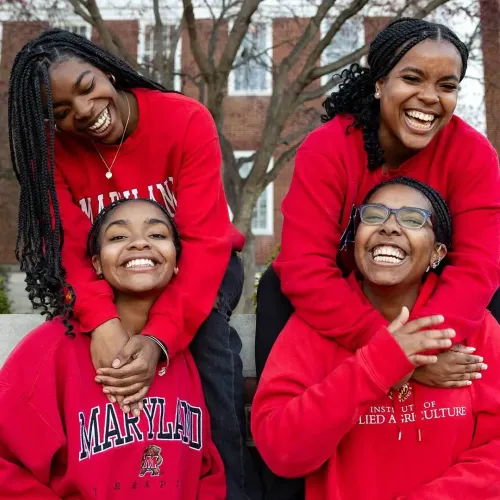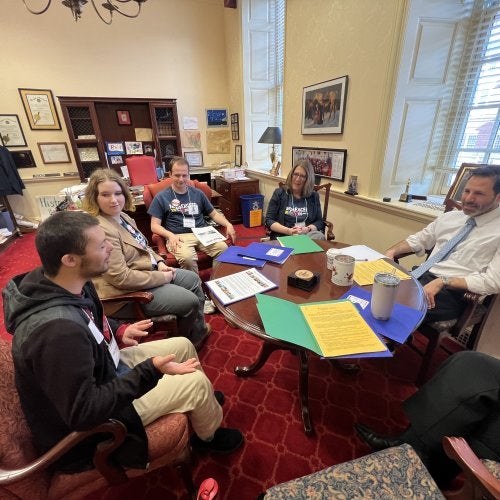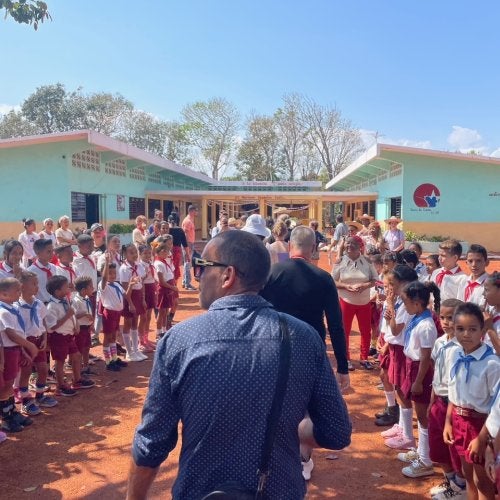
Schools nationwide have begun to roll out mindfulness programs in the classroom to help students navigate difficult conversations surrounding mental health.
These initiatives have proven to help students increase productivity, resilience, and relationship building all while reducing anxiety, stress, and emotional reactivity. Yet, for middle school teacher Angela Norwood mindfulness ventures beyond the walls of the classroom.
Norwood has taught for over 30 years and began instructing a semester-long mindfulness course at Briggs Chaney Middle School last year. It is the first mindfulness course in Montgomery County Public Schools.
“As a teacher, I see kids every day who are easily triggered and need to self-regulate … and those are some of the things that I am teaching,” said Norwood.
Norwood recently spoke at a professional development event hosted by the College of Education that taught future teachers how to incorporate mindfulness inside and outside the classroom for their students.
Norwood developed the curriculum, which centers around teaching students useful stress-management techniques such as breathwork and understanding the science behind the brain’s stress responses. Initially, the county initiative aimed to decrease the number of student suspensions; however, it has also helped students manage self-regulation in the classroom.
The event was attended by students who wanted to learn how to best support their students who may be struggling academically and socially in the classroom.
Graduate student Gabrielle Gee attended the event to learn how to prevent burnout in the profession as a student and as a teaching assistant at Eleanor Roosevelt High School in Prince George’s County. She walked out with more knowledge on how to help her students mitigate stress, including holding class forums and building time for students to explore their emotions.
Gee, who is in the process of completing her graduate research project on the impacts of the COVID-19 pandemic on students’ mental health and socioemotional learning, said that post-pandemic, some students are having difficulty maintaining relationships with their peers in the classroom. As a result, Gee developed community conversations for her students to discuss issues in the school’s community. The forums help students establish self-confidence.
“We see a lot of friendships [grow] out of our class forums because it’s just students being honest,” Gee said.
Cameron McClellan ’24, who interns at Riverdale High School in Howard County, mentioned that she often sees students who are overwhelmed with classwork. As a result, McClellan incorporates grade forgiveness methods and designated opportunities for students to submit makeup work. Additionally, the secondary education major said she ensures that she equips herself with mindfulness techniques to help avoid burnout in the classroom.
“Stress is a two-way street; teachers and students face stress,” said McClellan. “You can’t teach [mindfulness] if you don’t do it yourself.”
McClellan added that the exercises explored at the event helped her stay calm in stressful classroom situations and mitigate the anxieties of entering the teaching field.
“There is a lot of negative talk surrounding teaching, and this program does a lot to make teaching a more long-term profession,” she said.
Norwood advises new teachers to try to build patience and be adaptable in the classroom.
“You have to pour from your overflow because if you just pour from your cup, your cup ends up empty,” said Norwood. “Mindfulness is about flexibility. Everything doesn’t have to happen right now.”



